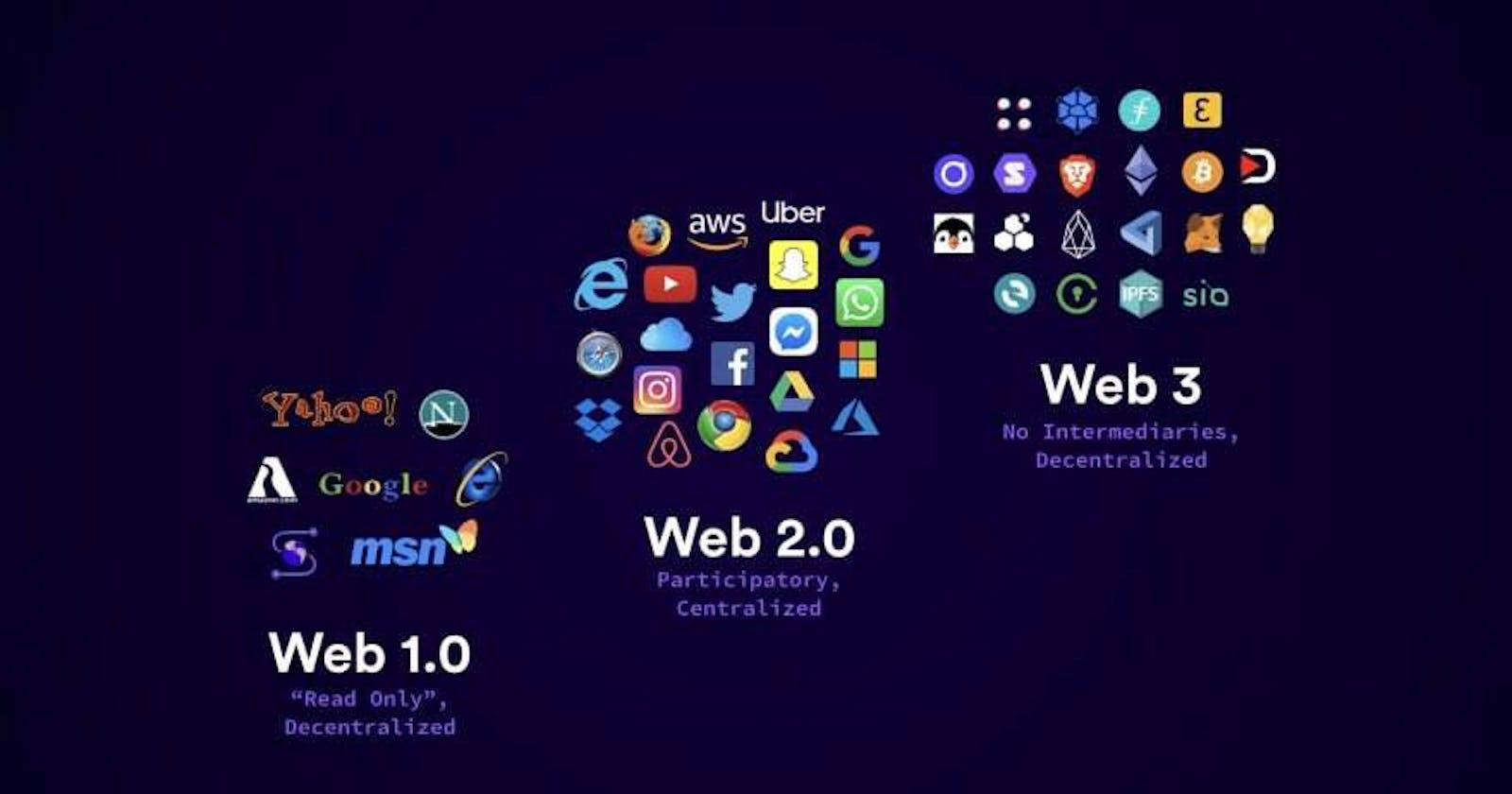In this article, I'll discuss the differences between Web 2.0 and Web 3.0 technologies that have recently taken over the internet.
To comprehend the distinction, we must first comprehend the meanings and similarities of each of them, as well as the meanings of each of the technologies.
Web 2.0
Web 2.0 is simply an improved version of the first worldwide web, characterized specifically by the change from static to dynamic or user-generated content and also the growth of social media.
The concept behind Web 2.0 refers to rich web applications, web-oriented architecture, and social web. It refers to changes in the ways web pages are designed and used by the users, without any change in any technical specifications.
Noticeable Features of Web 2.0
Here are some of the notable traits you can identify with web 2.0.
- Web 2.0 enables free information sorting thereby enabling users to collectively retrieve and classify the information.
- The second generation of internet services also focuses on ensuring dynamic content with high responsiveness to user inputs.
- Web 2.0 also emphasizes evaluation and online commenting as channels for information flow between site users and site owners.
- Web 2.0 enabled access to web content from televisions, mobile devices, multimedia consoles, and almost any internet-connected device.
- Most important of all, web 2.0 is also referred to as a participative social web. Users could now participate in the creation and sharing of responsive content alongside presenting favorable prospects for collaboration. Therefore, one can clearly notice how web 2.0 is vital in encouraging the growth of new virtual communities.
Web3
While web 2.0 might look like an advanced approach to the internet, it still harbors many setbacks. What about the security of your personal data? Trusted institutions take control over the data of users in Web 2.0, especially due to the need for trusted intermediaries. If two parties want to complete a transaction and they don’t know or trust each other, then they would have to rely on trusted intermediaries. However, the intermediary has control over the data storage and management thereby strengthening their grip over users. In addition, centralized power has never gone well in times of crisis thereby calling for decentralization. The latter player in the question of “what is the difference between web 2.0 and web 3.0?” has a promising solution to the setbacks in web 2.0.
Web 3.0 presents a promising improvement over Web 2.0, especially with major transformations in terms of infrastructure. Also referred to as the semantic web, the third generation of the web leverages an advanced metadata system. The metadata system helps in structuring and arranging all types of data for making it readable for humans and machines. The foremost advantage associated with Web 3.0 is practically the best highlight in Web 2.0 and Web 3.0 differences. Web 3.0 takes away the need for centralized intermediaries and introduced the universality of information.
Furthermore, users and machines will be able to interact with data. But for this to happen, programs need to understand information both conceptually and contextually. With this in mind, the two cornerstones of Web 3.0 are semantic web and artificial intelligence (AI).
Noticeable Features of Web 3.0
You can build a stronger foundation for understanding “What is the difference between Web 2.0 and Web 3.0?” by focusing on the features of Web 3.0 also. Here are some of the crucial highlights about Web 3.0 which would help in differentiating it from Web 2.0.
- Web 3.0 leverages artificial intelligence for offering correct results at a faster pace alongside accessing real-time insights.
- Web 3.0 also enables users to capitalize on the potential of 3D visuals and graphics.
- Another critical feature of Web 3.0 refers to the Semantic Web functionality. It implies that Web 3.0 could support understanding the meaning of words. As a result, machines and humans could easily find, share and analyze information in web 3.0.
- You can also find the prominent trait of improved privacy and security in Web 3.0.
- The web 2.0 and web 3.0 differences would also focus on the safeguards for user data and identity. Web 3.0 employs advanced authorization mechanisms through distributed ledger technologies and encryption for securing user identity and data.
I hope I’ve explained perfectly the difference between web2 and web3 in this article. Thank you for your time. Drop your questions below if you have any and follow me for more article like this. 💘💘💘
This article is written on behalf of blockgames, nestcoin and zuri

